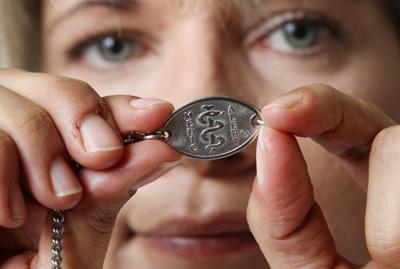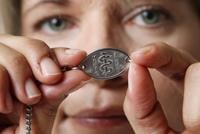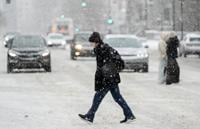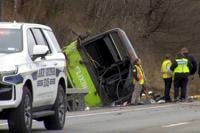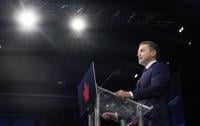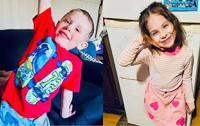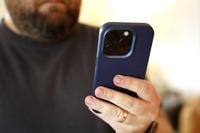MONTREAL - MedicAlert bracelets are well known to most şĂÉ«tvs — a distinctive piece of jewelry that allows first responders to identify medical conditions in emergencies.
The MedicAlert Canada Foundation, the non-profit that oversees the program, has been aiming to modernize its services in recent years and will soon deploy technology that connects its members' electronic health records directly to 911 dispatchers.
When an operator receives an emergency call from a number, software developed by the foundation automatically sends a message to MedicAlert's computers asking if the phone number is linked to a medical record found in its database.
If it is, it pops up directly on the dispatcher's computer screen.
"All of this happens in less than a second," said MedicAlert Canada President Leslie McGill.
"Before they even dispatch someone to respond to the emergency, they can actually see all of the medical conditions, all of the information that's available in that record, and what that does is help the first responder prepare before they even get to the scene."
McGill believes this will mean vast improvement in the way emergency calls are handled. She cites an example of a diabetic person who is in need of medical help. An emergency responder who has access to such information before arrival would be better equipped to address the active health concern quickly and effectively.Â
"It's all about time, and in an emergency time is of the essence," McGill said.
Canada is in the midst of implementing next generation 911 — what the şĂÉ«tv Radio-television and Telecommunications Commission describes as an overhaul that will provide quicker and more accessible communication during emergencies.
The initial deadline was March 2025, but that was extended to March 31, 2027 after most provincial, territorial and municipal emergency service organizations indicated they would not be able to make the necessary upgrades in time.
The MedicAlert Canada Foundation is working with the CRTC and hopes to have the project up-and-running in roughly 200 911 centres across the country, with a timeline of three-to-five years.
The foundation tested the technology in Ottawa in 2024.Â
Before integrating the technology in the city, MedicAlert's 24/7 emergency hotline had received 172 calls from first responders there in just one year.Â
During the trial period, the computer system accessed 8,000 individual records.Â
"That's a significant number," McGill said. There are about 50,000 subscribers in the capital.
Some cities are just beginning the process, while others are further along.Â
Building the system is more complex in certain areas with poor telephone service, such as the territories or in northern Quebec and Ontario. But larger cities are ready to implement and McGill said they are working with Toronto.
The MedicAlert Canada Foundation is also developing a GPS product for people with Alzheimer's disease. It already manages the MedicAlert Safely Home program — a national wandering registry for people with dementia, hosted in the şĂÉ«tv Police Information Centre database. There are more than 65,000 people in this registry.
McGill said the special GPS product will hopefully be ready for 2026.
One of the challenges is the foundation is non-profit and its services are not covered by health insurance in any province.
"Since we're a non-profit organization, part of the funds we raise to carry out our activities involves charging for the service and the digital health record," McGill said. "Given the current economic situation and the uncertainty, it's sometimes difficult for people to decide whether they want to pay for the service."
The şĂÉ«tv foundation is one of nine affiliates of MedicAlert Foundation, headquartered in the U.S.Â
Since 1961, more than 1.5 million people have benefited from MedicAlert services in Canada alone. Of the 800,000 current subscribers, roughly 25 per cent are from Quebec, the second-highest enrolment figure after Ontario.
This report by şĂÉ«tvwas first published May 11, 2025.
şĂÉ«tv Press health coverage receives support through a partnership with the şĂÉ«tv Medical Association. CP is solely responsible for this content.
Note to readers:This is a corrected story. A previous fersion contained incorrect information in a hypothetical example about a diabetic patient.

